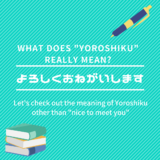Hi everyone!
Do you enjoy studying Japanese everyday?
One of my students at the intermediate level said to me the other day,
Once I get to the intermediate level, I’m not sure how I can keep improving my Japanese. I cannot feel the improvement anymore in a way that I felt when I first started studying!
When you first start learning Japanese, there are lots of things to memorize like vocabulary, grammar, and cultural things. So every lessons you learn something new and you can feel a big improvement after one lesson.
But once you get to the point where you feel comfortable talking about the daily things in Japanese, it’s normal that you become unsure if you are actually improving your Japanese or if the way you study is right.
Currently I’m teaching two of these students online and I thought the way they learn Japanese might have an inspiration for you. So today let me share their tactics and how I teach them online!
Step 1. Input : Reading articles on NHK News Web Easy
Have you heard of the website called “NHK News Web Easy”?
This is the website that introduce Japanese News with plain Japanese so that foreigners who live in Japan can get the daily information without having to know all the difficult kanji and vocabulary.
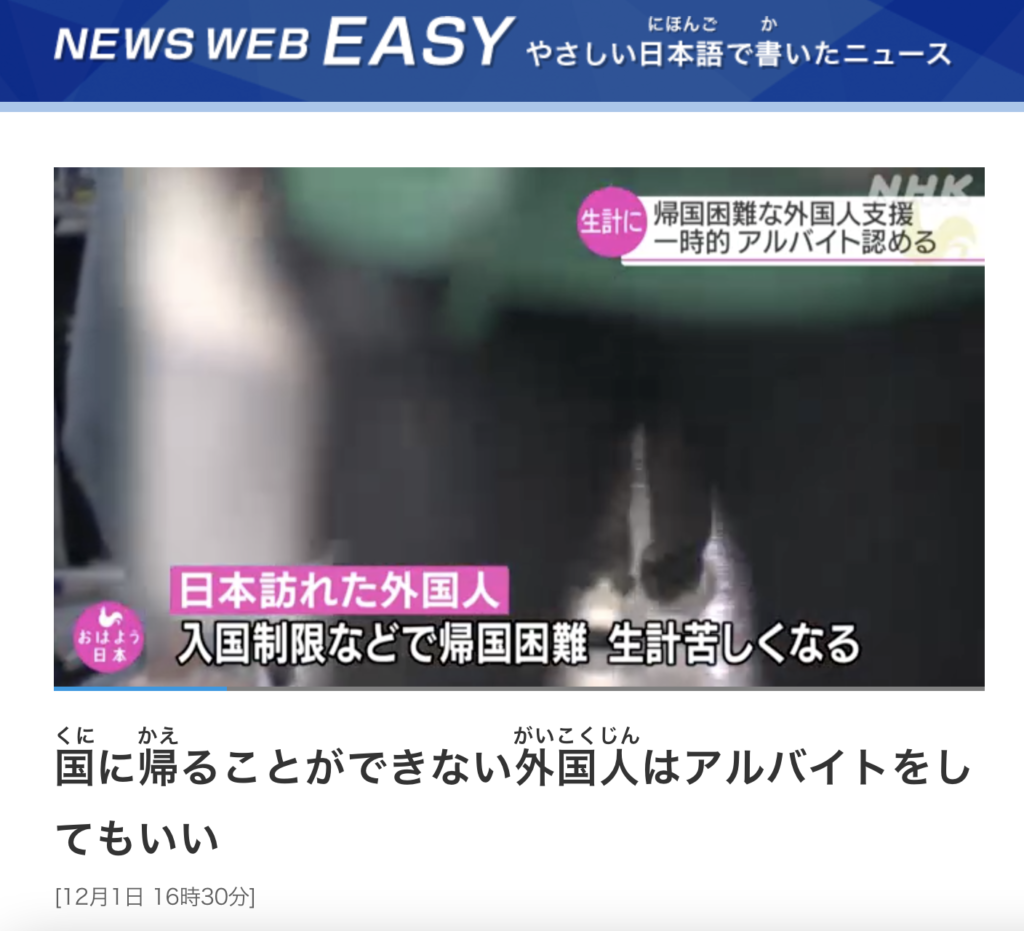
Japanese used for TV news or newspapers are very difficult (even difficult for Japanese natives!). But due to the recent increase in immigrants from foreign countries to Japan, the importance of やさしい日本語(plain/easy Japanese)has become more and more important, which is the great news for Japanese language learners!
In this website,
you can not only read article in plain Japanese, but also listen to the audio news. So you can actually practice listening as well.
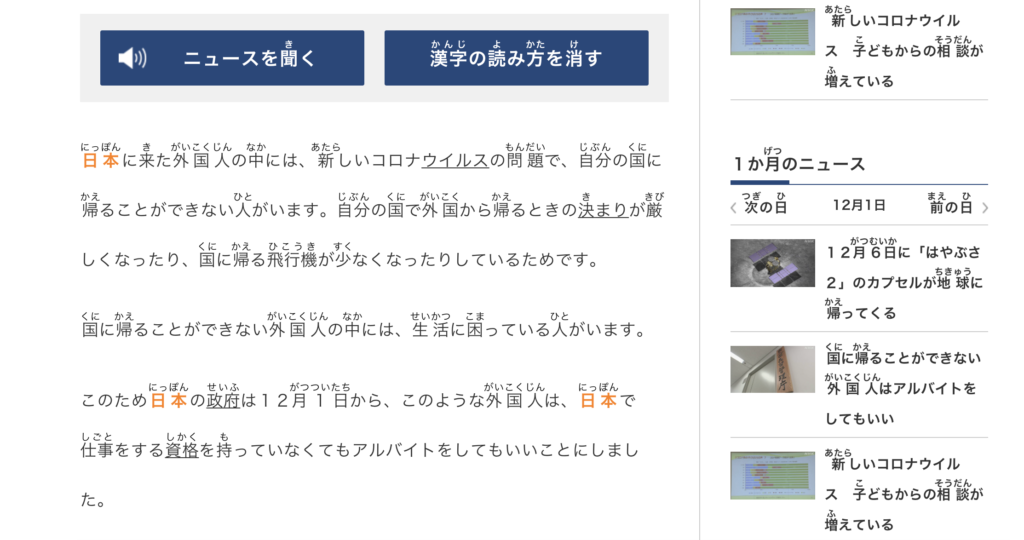
At the top of the article are two buttons that says;
「ニュースを聞く」& 「漢字の読み方を消す」.
If you click on ニュースを聞くbutton, you can listen to the audio that reads the news with plain Japanese.
If you click on 漢字の読み方を消すbutton, hiragana on each kanji will disappear, so you can test yourself if you can read kanji correctly.
Step 2. Speak it aloud and make a summary.
You might have noticed already, but reading&listening(Input) and writing&speaking(Output) is different.
To be able to read something and understand it doesn’t necessarily mean that you can speak.
Therefore, in my opinion, after having an input activity and understand well about the contents, it is very important that you practice output what you’ve learnt already.
In my online lesson, I always ask my students re-tell the story or summarize it with their own words, and then I correct their mistakes.
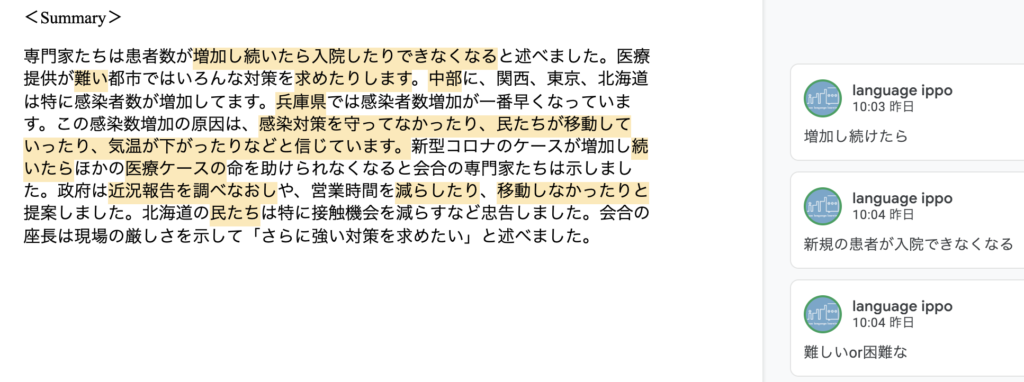
If this is too hard for you, you can write down the summary and have it checked by natives like the screenshot above.
Step 3. Read the original articles
Reading the article in plain Japanese and make a summary is good enough.
But if you want yo challenge yourself even harder, you can go back to the original news that Japanese people read.
At the bottom of the each article, there’s a button that says「普通のニュースを読む」 as shown in the picture below.

If you click on this button, it will direct you to the original Japanese article like this;
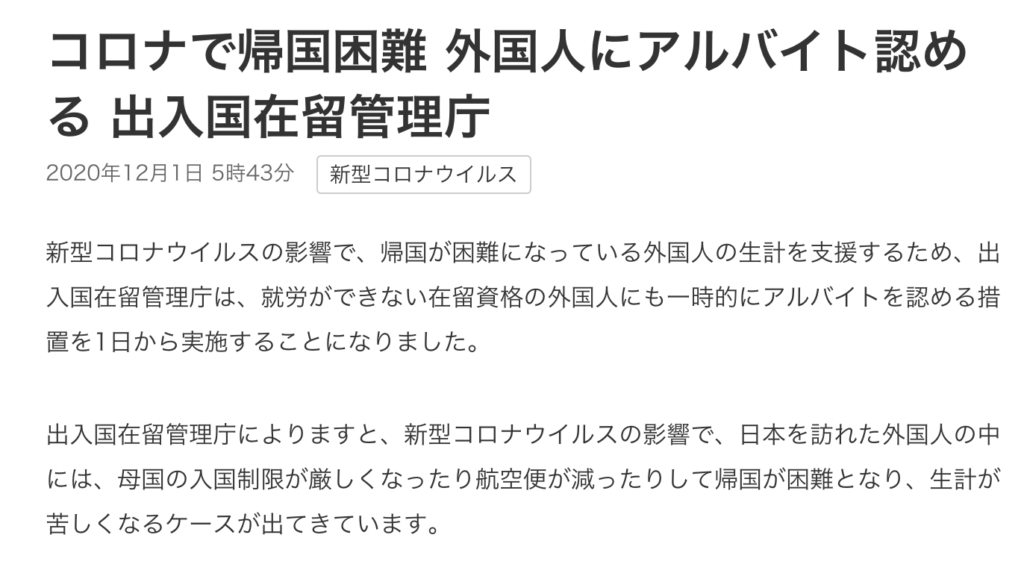
You can notice that this version has a lot more kanji than the former one.
If you start with this kind of article, you might feel overwhelmed with too many difficult vocabulary and kanji. But by reading the same article with easy Japanese in advance, your schema will be activated and you are most likely to be able to read the original text and understand some of the paragraphs, not to say you can understand them perfectly.
Summary
After reading, you can listen to the audio to check your understanding or read again without hiragana on Kanji.
Try to tell the contents of the article with your own words. It is best if you could have them checked by native speakers.
Challenge yourself with the original text and see how much you can understand
If you haven’t visited NHK News Web Easy website,
please do have a look at it because this is a really good way to build your vocabulary and expressions!
Hope this is helpful for intermediate Japanese language learners!


